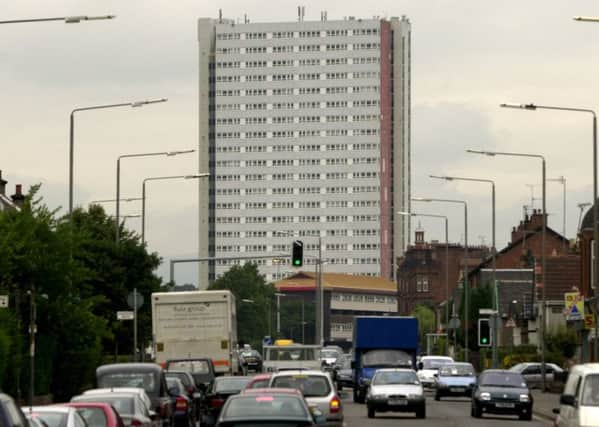Book review: Who Built Scotland: A History of the Nation in 25 Buildings


In a sense the Moffat essay is an odd one out, though paralleled by Kathleen Jamie’s essay on Anniesland Court, Scotland’s only listed high-rise tower block. She writes of it with approval, remarking that an intelligent mixture of tenements and towers could give us “Scottish cities and not wastelands of identikit suburbs”. In reality, of course, “identikit suburbs” with bungalows built in the 1930s are places where people are very happy to live. Why sneer at them?
This points to what is missing in the book, to a criticism which may be validly made only because of the claim that we are offered a “history of the nation in these 25 buildings”. Certainly it’s a history of a sort, but with so many pieces about Scotland in very early days, it’s an unbalanced one. So, for instance, the first essay is a beautiful one by Kathleen Jamie again on the “Geldie Burn 8000BC” and the long-vanished shielings of upper Deeside and the hills beyond. Excellent and evocative, but what about the farmhouses and steadings built in the 18th and 19th centuries, many of them beautiful, all evidence of the Age of Improvement and the taming of the natural landscape? Missing almost entirely too is anything about the smaller burghs of Scotland with their kirks, town-houses and sheriff-courts. Edinburgh is well-covered of course, but Aberdeen with its own remarkable buildings like Marischal College and Archibald Simpson’s New Market gets scarcely a mention.
Advertisement
Hide AdOf course such criticism is cavilling, a bit like going to a whisky-tasting and complaining that you can’t get a glass of claret. In which context there is a fine essay by Moffat on the Glenlivet Distillery. Alexander McCall Smith writes with characteristic knowledge and enjoyment on Charlotte Square and Surgeon’s Hall in Edinburgh. James Robertson writes sympathetically on Abbotsford and also on the Forth Rail Bridge which, he tells us, the London Correspondent of the New York Tribune called “a hideous structure…” which “totally ruins some of the most beautiful scenery in Scotland”. Just like the wind factories criss-crossing the land, you may say, but perhaps we’ll come to love and admire them as we do the Rail Bridge.
The book is eclectic to the point of being quirky, but none the worse for that. Still, I wonder if we really need a chapter on Hampden Park with the tedious re-telling for the umpteenth time of the Ally McLeod fiasco in Argentina, and, despite the importance of North Sea Oil, there’s nothing very interesting to say about Sullom Voe. James Crawford has a very good article on Mavisbank House, built for John Clerk of Penicuik and now a shell gutted by fire in 1970. It’s odd however that he thinks that “Country houses have been anachronisms since at least the early part of the 20th century”. Many have indeed disappeared, but many others still play an important part in rural life and culture.
A book like this is bound to provoke disagreement, just as a list of the greatest Scottish novels or footballers will, but it is very enjoyable and rich in information. You would have to be quite exceptionally knowledgeable not to learn much from it, and it certainly paints a fine picture of our strange and varied country and its history. There should be a sequel, 25 more buildings, and then another and another, the line stretching on to the crack of doom.
*Who Built Scotland: A History of the Nation in 25 Buildings, y Alexander McCall Smith, Alistair Moffat, James Crawford, Kathleen Jamie and James Robertson, Historic Environment Scotland, 335pp, £20